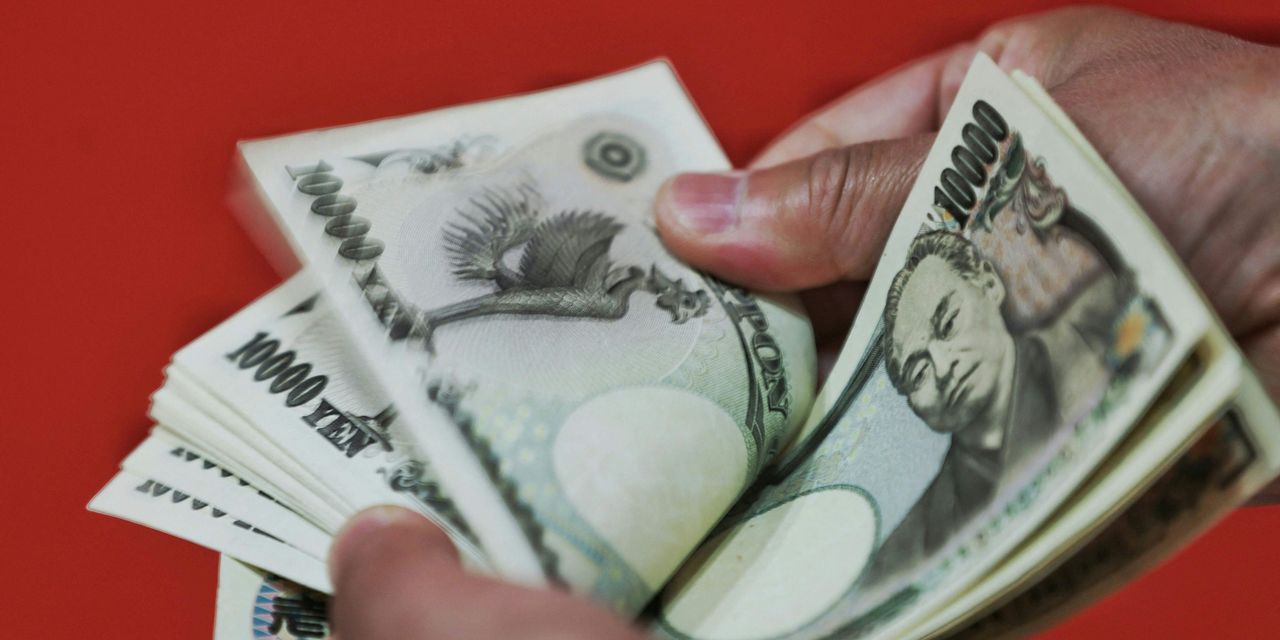The Japanese yen suddenly rallied against the U.S. dollar on Friday amid reports and widespread speculation that Japan’s Ministry of Finance and Bank of Japan had intervened to prop up the yen after the currency tumbled to a fresh 32-year low against the greenback.
Earlier in the day, the yen had weakened more than 1% against the dollar to as low as 151.95 yen, its lowest level against the dollar currency since July 1990. However, just minutes before the 4 p.m. London “fix,” which is the closest thing the currency market has to a daily close, the currency pair suddenly reversed.
However, the yen then strengthened
USDJPY,
rising more 2% to 147.26 yen to the dollar at its highest level of the session.
Market analysts quickly weighed in to say that the move appeared to be the result of direct intervention in currency markets, with some speculating that Japan’s Ministry of Finance might be selling U.S. Treasurys or dollars to prop up the yen.
“It certainly feels like it’s intervention,” said Bipan Rai, head of FX strategy at CIBC Capital Markets.
Additionally, Japanese news organization Nikkei reported that the Ministry of Finance and Bank of Japan had indeed intervened to support the falling yen, citing anonymous government officials.
Conditions were ripe for Japanese authorities to intervene, Rai said, given the lower liquidity levels on a Friday afternoon and the fact that the dollar was already under pressure following an earlier report in the Wall Street Journal which signaled that the Federal Reserve might downshift to smaller interest-rate hikes after the November policy meeting.
The move in the yen comes after the Bank of Japan carried out unscheduled emergency bond-buying operations on Friday for the second straight day, according to a Reuters report, after the yield on 20-year
TMBMKJP-20Y,
and 30-year
TMBMKJP-30Y,
Japanese government bonds
TMBMKJP-10Y,
rose to the highest level since 2015, while the 10-year yield briefly broke above the BoJ’s official ceiling of 25 basis points earlier in the week.
Earlier this week, Masato Kanda, Japan’s vice finance minister for international affairs, told reporters that Japanese authorities wouldn’t openly announce future interventions to support the yen. He also said that the MoF was “always ready to take necessary action as excessive volatility has become increasingly unacceptable,” according to Reuters.
The move comes after Japanese core inflation rose to its highest level in eight years according to data released overnight. On a year-over-year basis, Japan’s core consumer-price index climbed to 3% in September, up from 2.8% the prior month, according to FactSet data.
Jon Turek, the founder and CEO of JST Advisors, said Japan’s rising inflation would increase the pressure on the BoJ to compromise on its ultra-loose monetary policy, although he said it would be impossible to anticipate when the central bank might throw in the towel.
“I don’t have a strong view on when they throw in the towel. It’s hard to say considering there’s been no inclination from the BoJ that this could happen,” Turek said.
When it comes to intervention, Turek said the easiest thing for the MoF to do to prop up the yen would be to sell their massive Treasury holdings.
After the latest inflation print, investors will be paying close attention to what BoJ chief Haruhiko Kuroda might say during next week’s policy meeting, which concludes next Friday. The BoJ is expected to release an update to their macro forecasts after the meeting next week, which could offer some insight into the bank’s thinking, especially the numbers surrounding inflation.
There has recently been chatter about the MoF carrying out “rate checks” — meaning the ministry has been calling large currency dealer desks to check the prices on the dollar-yen, Turek said.
The strategy has long been used by Japanese authorities to try and move the dollar-yen pair without having to intervene directly.
Foreign investors have repeatedly tried to pressure the BoJ and MoF to capitulate by shorting Japanese government bonds and the yen this year, but so far, Japanese authorities have fended off these speculative attacks by buying more bonds and backstopping the yen when the pace of its decline becomes “disorderly,” Turek said.
“It’s not clear that they have a line in the sand at 150 that says ‘though shall not cross’,” Turek said. “They just didn’t want the yen to go to 150 in a mess.”
But the problem with direct intervention is its effects are usually not long-lasting, with market analysts anticipating that the dollar could soon reverse the move, barring more concrete action from the BoJ or the Fed. Indeed the move was already reversing Friday afternoon in the U.S.
